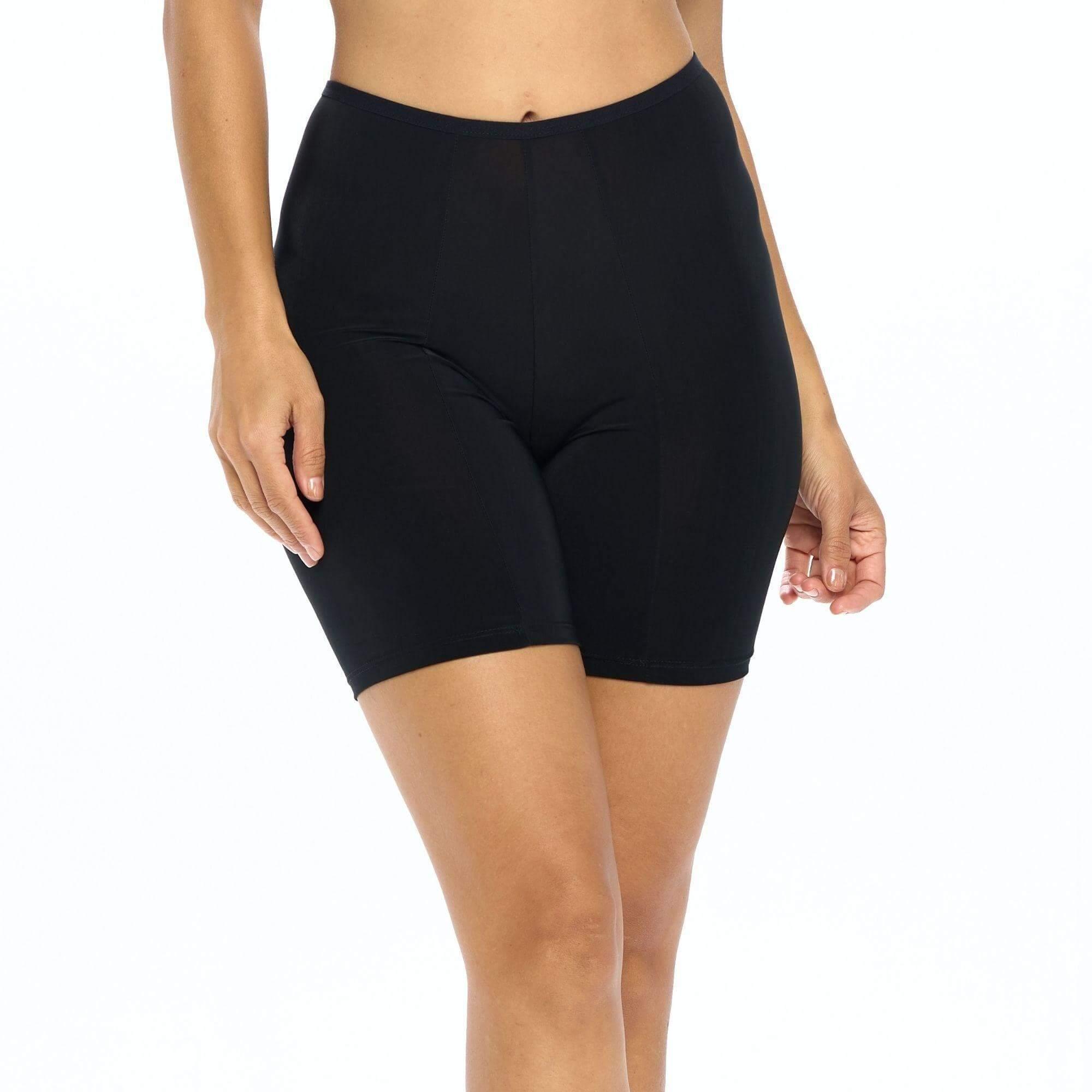Dark inner thighs are a common skin problem for both men and women. There are several potential causes for this skin condition such as friction, hormonal imbalances, sun exposure, and genetics. While there are a variety of creams, serums, and treatments available to help lighten the skin, there are also natural and easy methods such as wearing anti-chafing shorts, that can be very effective.
Understanding the Causes of Dark Inner Thighs
Although having dark inner thighs is common for people of all shapes and sizes, it can make you self-conscious when it comes to wearing cute flirty skirts or mini dresses. To start correcting the problem, it is first important to understand the underlying causes so that you can take steps to address it.
Friction and Chafing
One of the most common culprits behind dark inner thigh skin is friction and chafing, especially if you have larger thighs or if you wear tight clothing that rubs against your skin. This constant rubbing can cause irritation and inflammation, leading to hyperpigmentation and darkening of the skin over time.
To prevent friction and chafing, it's important to wear loose-fitting clothing that doesn't rub against your skin. Anti-chafing shorts, like the original Shortlette by Undersummers, are also a good way to protect your thighs from chafing and rubbing.
Hormonal Imbalances
Hormonal imbalances can contribute to dark inner thighs. This is particularly true for women who may experience changes in hormone levels during pregnancy or menopause. These hormonal changes can affect the amount of melanin in the skin, leading to discoloration.
If you suspect that hormonal imbalances may be contributing to your dark inner thighs, it's important to speak with your healthcare provider. They can help you identify any underlying hormonal issues and develop a treatment plan to address them.
Sun Exposure
Exposure to the sun's harmful UV rays can cause skin damage and darkening of the skin. Therefore, it's important to protect your skin whenever you go outside by wearing sunscreen and wearing protective clothing such as the Undersummers swim shorts for women. You can take other steps to protect your skin from the sun. This includes wearing hats, seeking shade, and avoiding sun exposure during peak hours of the day.
Genetics
Finally, you can actually inherit dark inner thighs. Certain skin types are naturally more prone to hyperpigmentation and may require specific treatments to address the issue. If you have a family history of dark inner thighs or other skin discoloration issues, it's important to speak with a dermatologist. They can help you identify any underlying genetic factors and develop a personalized treatment plan to address your specific needs. Remember, while dark inner thighs can be frustrating, there are many effective treatments available to help you achieve the clear, even-toned skin you deserve.
Below are a few tips you can use to help you lighten your dark inner thighs.
Step 1: Exfoliate to Lighten Dark Inner Thighs
Besides wearing protective garments like the lace slip short, you can exfoliate to get rid of dark skin. When you exfoliate, you get rid of dead skin cells. Exfoliating also promotes the production of new skin cells. It's a crucial step in any skincare routine, especially if you're looking to lighten dark inner thighs. By exfoliating regularly, you'll reveal fresh, healthy skin that's free from blemishes and discoloration.
Choosing the Right Exfoliating Product
When it comes to choosing an exfoliating product, it's important to select one that's gentle enough for sensitive skin. Look for products that contain natural exfoliants, such as sugar or salt, as these are less likely to cause irritation than products containing synthetic exfoliants.
Before settling on a product, don’t forget to check its pH level. Your skin has a natural pH level of around 5.5, which is slightly acidic. Choosing a product with a pH level that's too high or too low can disrupt your skin's natural balance and cause further damage.
Proper Exfoliation Techniques
When exfoliating, it's important to use gentle circular motions to massage the product into your skin. If you’re too rough on the skin, you can cause more irritation and damage. It's also important to rinse thoroughly with warm water and gently dry using a fresh towel. If you're using a physical exfoliant, such as a scrub, be sure to avoid any areas of your skin that are particularly sensitive or prone to irritation. Instead, focus on the areas where you want to lighten dark inner thighs, such as the inner thighs themselves or the bikini line.
How Often to Exfoliate
Depending on your skin type and the product you're using, you may need to exfoliate once or twice a week. More, however, is not better. Excessive exfoliation can actually make your skin more sensitive and prone to damage.
If you're using a chemical exfoliant, such as an alpha-hydroxy acid (AHA) or beta-hydroxy acid (BHA), you may need to adjust your exfoliation frequency based on your skin's reaction. These types of exfoliants can be more potent than physical exfoliants and may require less frequent use.
Exfoliating regularly is an important step in any skincare routine, especially if you're looking to lighten dark inner thighs. By choosing the right product and using proper techniques, you can reveal fresh, healthy skin that's free from blemishes and discoloration.
Step 2: Moisturize and Nourish Your Skin
Exfoliating your skin is a great way to get better looking skin. It is, however, just as important to follow up with a moisturizer to keep your skin soft and supple. Moisturizing your skin regularly can also help prevent other problems like skin dryness and rashes.
Selecting a Suitable Moisturizer
When choosing a moisturizer, it's important to consider your skin type. If you are prone to oily skin, look for a lightweight moisturizer that won't clog your pores. If you have dry skin, choose a richer moisturizer that will provide intense hydration. For combination skin, look for a moisturizer that's formulated for both oily and dry areas of the body.
In addition to considering your skin type, look for a moisturizer that contains natural ingredients. Shea butter, jojoba oil, and aloe vera are great options because they're gentle on the skin and provide various benefits. Shea butter is rich in vitamins and fatty acids that help nourish and protect the skin. Jojoba oil is excellent for hydration and has antioxidant properties making it an excellent moisturizer. Aloe vera is known for its ability to soothe and help calm irritated or chafed skin.
ALT TXT IMG: 4 Easy Steps to Lightening Dark Inner Thighs
Natural Ingredients for Skin Lightening
If you're looking to lighten and brighten your skin, several natural ingredients can help. Lemon juice is often used on hair and the skin to lighten it. With a little patience, you can use lemon juice to help lighten or fade your dark inner thighs. Turmeric is another powerful antioxidant that can help reduce inflammation and brighten the skin. Because yogurt contains lactic acid, you can use it to exfoliate and brighten your skin too. When using these ingredients, it's important to be cautious and avoid overuse. For example, lemon juice can be harsh on the skin if used too frequently, and turmeric can stain the skin if not washed off properly. Always do a patch test before using any new ingredient on your skin, and consult with a dermatologist if you have any concerns.
Importance of Hydration for Skin Health
Dehydration can dry out the skin and prolong or further irritate the skin due to chafing. When you prioritize staying hydrated, you can more easily maintain balanced, healthy and glowing skin. Aim to drink at least eight glasses of water a day to keep your skin hydrated from the inside out. You can also incorporate hydrating foods such as watermelon, cucumbers, and leafy greens into your diet. In addition to drinking water, you can also use hydrating skincare products to keep your skin moisturized. Look for products containing hyaluronic acid, which is a powerful humectant or natural hydrator. This will help lock in moisture and keep your skin looking plump and youthful.

Step 3: Protect Your Skin from the Sun
Importance of Sunscreen
The sun can cause lots of damage to your skin, including your thighs. Sunscreen is your best defense against sun damage and hyperpigmentation. You should wear it daily, especially when you’re enjoying outdoor activities. Look for a quality sunscreen product that protects you from both UVA and UVB rays. Be careful that it has an SPF of at least 30 for the best protection.
Choosing the Right SPF
If you're going to spend extended periods of time in the sun, you may need to choose a higher SPF to provide adequate protection. However, remember that no sunscreen can fully protect you, so it's still important to seek shade and wear protective clothing.
Sun-Protective Clothing
To further protect your skin from the sun, consider wearing long-sleeved shirts, pants, and hats made from sun-protective fabrics. These fabrics are designed to block out harmful UV rays but are still comfortable and provide good airflow.
Step 4: Address Hormonal Imbalances
If you suspect that hormonal imbalances are contributing to your dark inner thighs, it's important to address these issues with the help of a healthcare provider. After an examination and consultation, your healthcare provider may recommend medication, hormonal therapy, creams, or other treatments to help regulate your hormones and reduce hyperpigmentation.
Consider Professional Treatments
If you're still struggling with dark inner thighs despite your best efforts, you may want to consider professional treatments like chemical peels, laser therapy, or microdermabrasion. These treatments can help exfoliate the skin, boost collagen production, and lighten dark spots for a smoother, more even complexion.
Final Thoughts
Minimize problems with dark inner thighs by preventing thigh chafing. When you wear shortlettes daily, you can stop worrying about your skin rubbing together which can lead to dark inner thighs. You’ll also feel cooler and more comfortable all day long.
You can go further to lighten your dark inner thighs by exfoliating regularly, moisturizing and nourishing your skin, shielding it from the sun, addressing hormonal imbalances, and considering professional treatments if necessary. These steps, along with protecting your thighs by wearing the right undergarments, can help you achieve the healthy, glowing skin you want and deserve.









